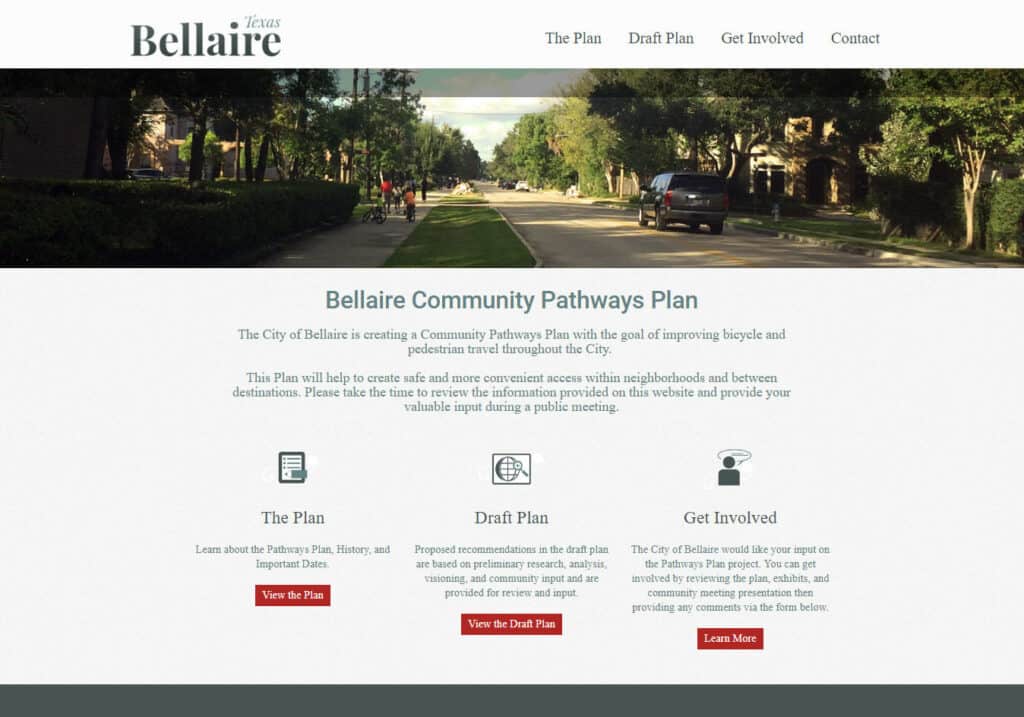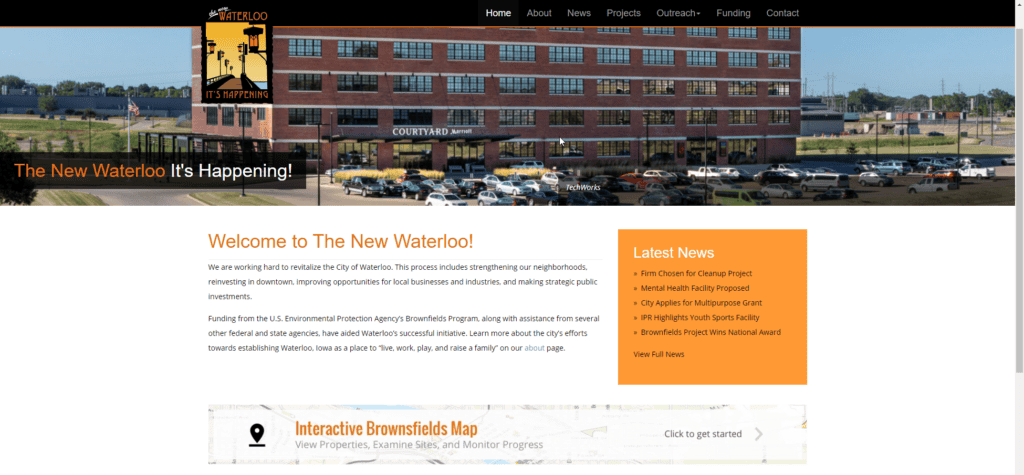A well-informed constituent will feel engaged and involved. Communities striving to improve citizen communications with their residents and visitors should periodically evaluate the technologies available and weigh their strengths against the community’s needs. Some technologies are excellent at quickly distributing information to a broad audience, while others allow for interaction and multimedia applications.
Technologies to Consider to Aid Citizen Communications
QR Codes
One innovative method gaining traction for enhancing citizen communication is the utilization of signage embedded with QR codes. QR codes act as convenient gateways, allowing individuals to access pertinent information using their smartphones. Users are directed to a designated website by simply scanning the code, providing them with instant access to valuable resources, updates, and announcements. This approach not only streamlines information dissemination but also fosters greater engagement and connectivity within the community.
Mobile-Friendly Websites
Since the use of mobile devices is steadily increasing, ensuring your websites are mobile-friendly is imperative. Websites have historically been effective for providing information about living and working in a community, publishing government meeting information, and providing contact information. They can also aid citizen communications by registering for text message alerts as well as linking them to social media accounts, mobile apps, and surveys.
Text Alerts
With 97% of the population owning a cell phone and nine in ten owning a smartphone (according to the Pew Research Center’s findings), Americans are more mobile than ever. Making text alerts one of the fastest ways to communicate to citizens. A survey by Vision Technology Solutions, LLC states that email communications are trending down, and text alerts are gaining popularity. Signing up is easy for citizens, and there are many platforms that provide texting services. Subscribers can sign up to receive alerts from multiple communities to know what is happening where they and their loved ones live, work, and play. Alerts can include road updates, community events, local projects, office closings, disasters, and emergencies.

Mobile Apps
Mobile applications (apps) are quickly becoming a platform for civic engagement. Many government officials have found that mobile phones are the quickest way to connect with local residents. Apps can provide updates on traffic, crime, road closures, and voting reminders. For example, the Cedar Rapids mobile app Mobile CR, shares City-related news, tourism, events, and important messages.
Apps can also help local governments organize and distribute citizen issues and requests, thus reducing phone calls and walk-ins. Apps can be geared toward:
- Improving city neighborhoods
- Reporting problems
- Finding parking
- Collecting road conditions
- Paying parking tickets
- Tracking school buses
Some apps use “Crowd Sourcing” to share data with other users. The City of Colorado Springs recently used Waze, a popular crowd-sourcing navigation app, to include upcoming road closures for a bicycle race and proactively rerouted Waze users around the road closures during the event. Apps can demonstrate to citizens that community leaders are responsive and provide enhanced transparency of government-gathered data, leading to more trust in local government.
Social Media
Local Governments are increasingly using social media to not only communicate with citizens but also leverage their ability to listen to constituents. Social media sites such as Twitter (X), Facebook, and Instagram provide an effective platform to publicize events and alert people to traffic or construction situations.
Communities should note that in addition to publishing information on social media, they also have the opportunity to listen to and engage with their citizens. Following up on feedback, questions, and comments can help strengthen community relations.
One important note is that communities should not rely solely on social media to communicate during emergencies, as some constituents may not have internet access. Email, text messaging, and voice messages are essential emergency communications channels as they are the only outlets that can directly reach their entire audience.
Geographic Information System
Geographic Information System (GIS) emerges as a powerful tool capable of amalgamating maps, 3D scenes, embedded content, multimedia, and more into captivating interactive narratives for communities.
For example, communities can incorporate dynamic GIS to work alongside crowdsourcing software to collect community feedback on infrastructure or other projects similar to the City of Rockford, Illinois. ArcGIS Story Maps is another example of using GIS to integrate stakeholder feedback with maps. By commenting directly on a digital map, community members can craft compelling narratives that create awareness, influence opinions, and drive meaningful change within communities.
Other Communication Formats For Citizen Engagement
Video Tools

Videos get more clicks and views than text-only communications. 72% of people would rather use video than text, according to Hubspot. Live traffic camera feeds, public safety, project renderings, public service announcements, and live streaming can help drive community participation. More communities are using live video streaming services, such as Facebook Live and Periscope, to broadcast live events as they happen. Communities should consider the benefits of live sharing council meetings, festivals, parades, community sporting events, and concerts to help citizens feel that they are a part of their community even when they can’t participate in person.
Survey + Polling Tools
Survey and polling tools are indispensable assets for facilitating open dialogue and gathering valuable insights from residents. By harnessing these tools, communities can effectively gauge public opinion, solicit feedback, and involve citizens in decision-making processes. Using platforms like Mentimeter, integrating surveys and polling empowers communities to actively participate in shaping their local environment. With user-friendly interfaces and real-time data collection, these tools foster transparency and accountability, laying the groundwork for informed governance and inclusive policymaking.
Focused Websites
Creating specific websites for significant construction projects or community initiatives can help provide information and keep constituents up-to-date on project progress and long-term goals.
City of Bellaire Website
For example, the City of Bellaire, Texas, had a website developed to provide information and solicit community feedback about their Community Pathways Plan. Bellaire received community input through a survey that was heavily promoted through local groups and social media. The survey gathered recommendations from the community, and the final report was shared, allowing transparency so citizens could see how their feedback was incorporated into the plan.

City of Waterloo Website
Websites can also be key for collecting project information in addition to citizen communications. For nearly two decades, HR Green has been working with the City of Waterloo to help them transition numerous blighted properties plagued by contamination issues into assets that have helped expand the local tax base, create jobs, stabilize declining neighborhoods, and protect human health and the environment.
A brownfields project website geared towards informing citizens of the City of Waterloo, Iowa, was instrumental in empowering them to fully understand the history of environmental investigations completed in their respective neighborhoods. This dynamic outreach tool provides an overview of the project, highlights success stories, cites leveraged sources, and includes up-to-date news items. An interactive map accessible on the homepage allows users to track the status of targeted properties, review photographs, obtain parcel-specific data, and download reports.

Working With HR Green
The perception of successful projects increases with strong community support, but new technologies and how people use them are constantly evolving. We encourage community leaders to evaluate and consider leveraging various technologies to help streamline communication delivery, increase transparency, and improve constituent relations. HR Green’s project managers are ready to help. Reach out today for ideas on how to incorporate strong community engagement tools into your community’s next project.




